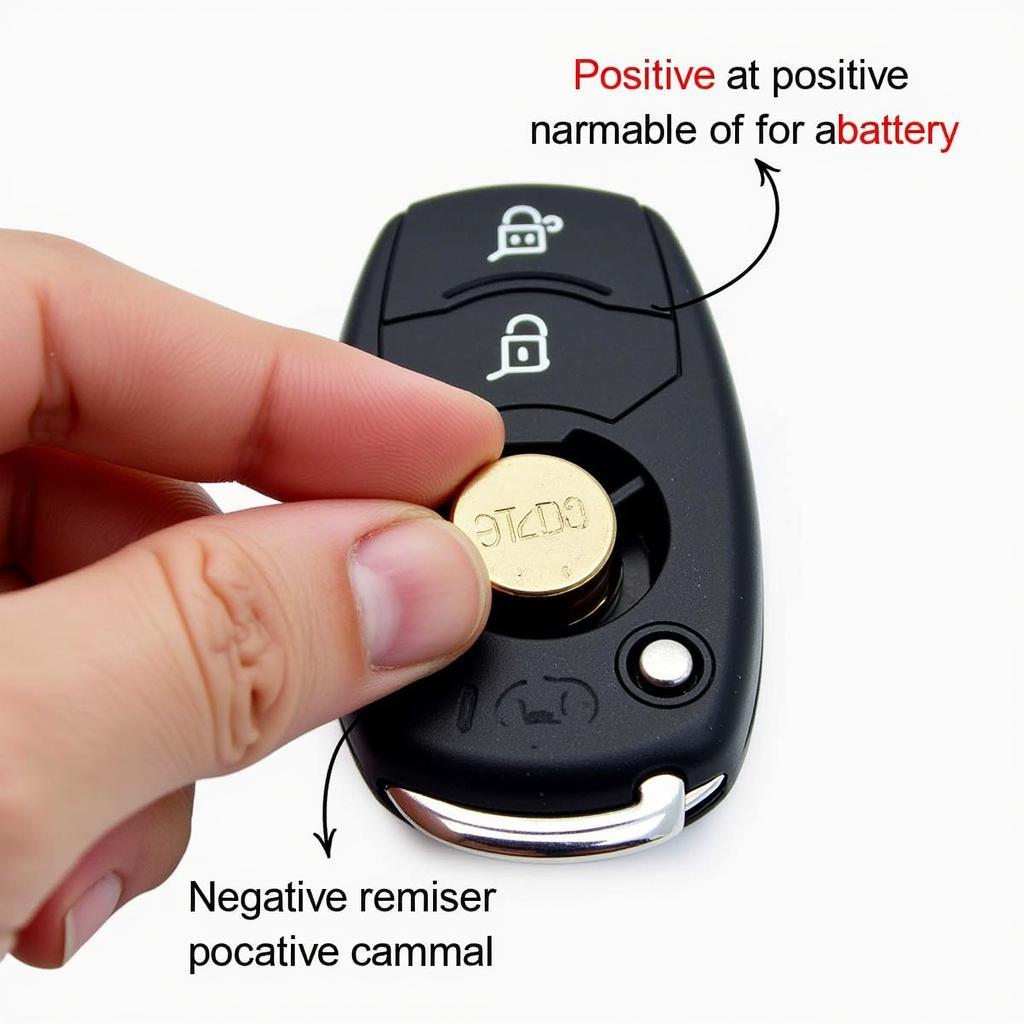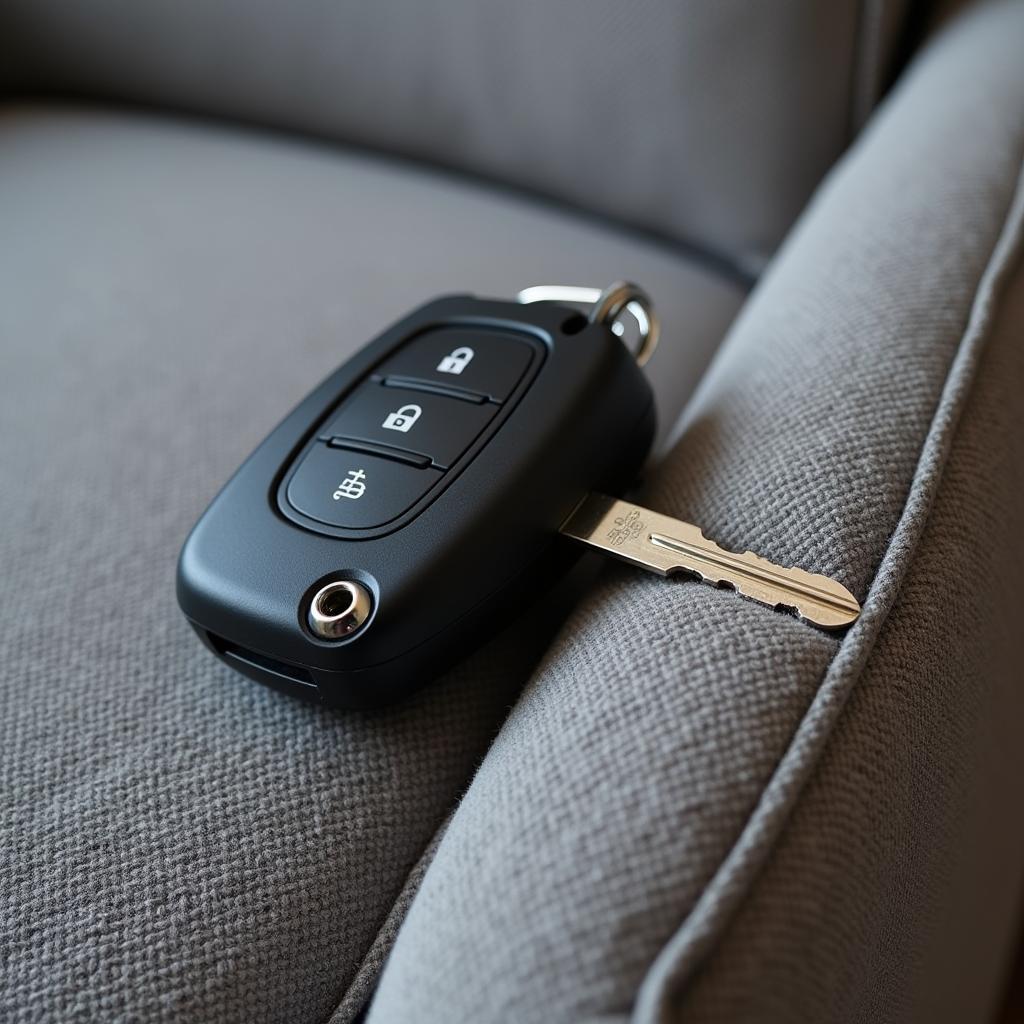Experiencing the dreaded “brake warning and ESP lights on” scenario in your 05 W209 Mercedes-Benz? You’re not alone. This is a common issue that can be caused by a variety of factors, ranging from simple sensor malfunctions to more complex electronic control unit (ECU) problems. This comprehensive guide will walk you through the potential culprits, how to diagnose the problem, and the steps you can take to restore your peace of mind (and your car’s braking system).
Understanding the Warning Lights
Before diving into the troubleshooting process, it’s crucial to understand what those illuminated warning lights on your dashboard signify. The brake warning light, often depicted as a red circle with an exclamation mark, indicates a problem within the braking system. This could range from low brake fluid to a malfunctioning brake component.
The ESP (Electronic Stability Program) light, typically represented by a car with skid marks, signals an issue with the vehicle’s stability control system. The ESP system works to prevent skidding and loss of control, particularly during cornering or on slippery surfaces. When these two lights illuminate simultaneously, it often points to a connection between the braking and stability control systems.
Common Causes of Brake Warning and ESP Lights On
Pinpointing the exact cause of these warning lights requires systematic troubleshooting. Here are some of the most common culprits:
1. Brake Wear Sensor
Your Mercedes-Benz is equipped with brake wear sensors that monitor the thickness of your brake pads. When the pads wear down to a certain point, the sensor triggers the brake warning light, indicating it’s time for a replacement.
2. Faulty Wheel Speed Sensor
Wheel speed sensors, also known as ABS sensors, play a crucial role in both the braking and ESP systems. These sensors relay information about wheel speed to the ECU. A faulty or dirty sensor can disrupt this data flow, triggering both warning lights.
3. Low Brake Fluid Level
Brake fluid is the lifeblood of your braking system. A low fluid level, often caused by leaks or worn brake components, can drastically reduce braking efficiency and trigger the warning lights.
4. Steering Angle Sensor Malfunction
The steering angle sensor informs the ESP system about the position of your steering wheel. If this sensor malfunctions, the ESP system may not be able to accurately determine the intended direction of travel, leading to the activation of the warning lights.
5. Electronic Control Unit (ECU) Issues
The ECU is the brain behind your car’s electronic systems, including the braking and ESP systems. In rare cases, a software glitch or a faulty ECU can disrupt the communication and functionality of these systems, triggering the warning lights.
Diagnosing the Problem
While some potential causes like brake pad wear are straightforward to identify, others require more in-depth diagnostics. Here’s a step-by-step approach:
-
Check Brake Fluid: Begin by inspecting the brake fluid level. If it’s low, there might be a leak in the system that needs immediate attention.
-
Visual Inspection: Visually examine the brake pads, rotors, and brake lines for any signs of wear, damage, or leaks.
-
Scan for Codes: Utilize a professional-grade OBD-II scanner to read the Diagnostic Trouble Codes (DTCs) stored in the ECU. These codes can pinpoint the specific area of the problem, providing valuable insights for repair.
-
Test Sensors: If the DTCs point towards sensor issues, further testing of the wheel speed sensors and steering angle sensor is necessary. This might involve using a multimeter to check for proper signal output.
-
Consult a Specialist: If the problem persists despite your troubleshooting efforts, it’s best to consult a qualified Mercedes-Benz technician or a specialized automotive electrician. They possess the expertise and tools required to diagnose and address more complex ECU or electrical system issues.
Resolving the Issue
The solution to your “brake warning and ESP lights on” dilemma hinges on the root cause identified during the diagnostic process. Here are some possible resolutions:
-
Replace Worn Components: If worn brake pads, faulty sensors, or leaking brake lines are identified, replacing these components is crucial for restoring optimal braking performance and resolving the warning lights.
-
Repair Wiring Issues: In some cases, damaged wiring or loose connections can disrupt communication between sensors and the ECU. Repairing or replacing affected wiring harnesses can rectify such issues.
-
Update or Reprogram ECU: If the ECU is determined to be the culprit, updating its software or reprogramming it entirely might be necessary. This is typically handled by a specialized technician using advanced diagnostic equipment.
Expert Insights
“While encountering brake warning and ESP lights might seem daunting, a systematic approach to diagnosis often reveals a manageable solution,” says Mark Schmidt, a veteran automotive electrician with over two decades of experience specializing in Mercedes-Benz vehicles. “Regular vehicle maintenance, including timely brake inspections and fluid flushes, can significantly minimize the risk of encountering these warning lights.”
 Mercedes-Benz Technician Inspecting Brake System
Mercedes-Benz Technician Inspecting Brake System
Conclusion
Ignoring illuminated brake warning and ESP lights in your 05 W209 Mercedes-Benz is not an option. These lights signal potential safety hazards that require immediate attention. By understanding the common causes, following a structured diagnostic approach, and seeking professional help when needed, you can ensure the safety and longevity of your vehicle’s braking system.



